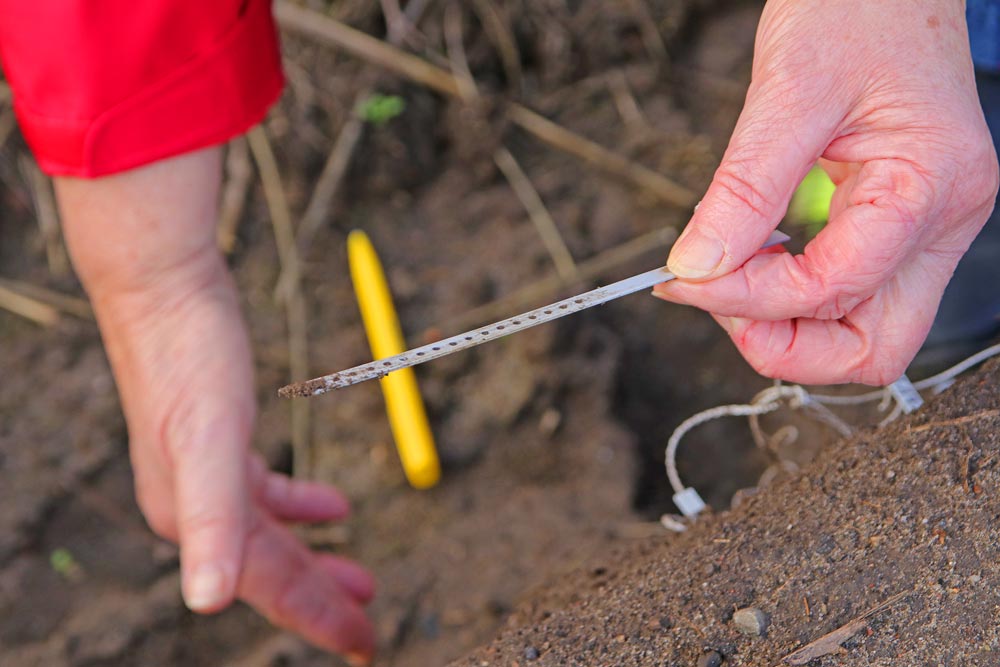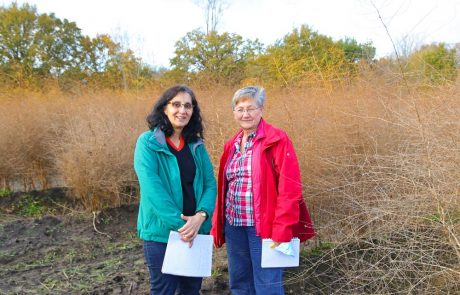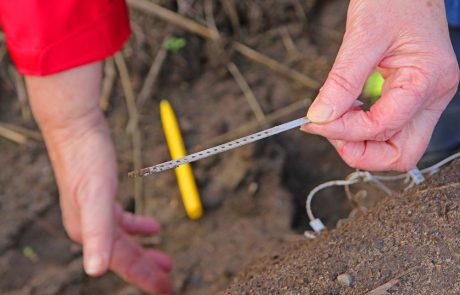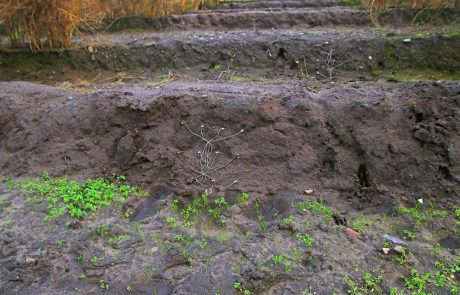
Living Asparagus
How do films influence the soil life in the asparagus ridge?
Living Asparagus
One of the most important vegetable crops in Brandenburg is asparagus. Brandenburg’s sandy soil and climate provide excellent growing conditions and ensure a flavourful and fresh product. The Institute for Vegetable and Ornamental Crops in Brandenburg (IGZ) is now looking at life under asparagus.
The white spring vegetable thrives on almost 5,000 hectares in Brandenburg. With over 22,000 tonnes, local asparagus accounts for 17 percent of total German production. Only Lower Saxony produces more.
In order to harvest the asparagus earlier in the year and to better control its growth, most farmers cover their asparagus fields with plastic film. The foil covering is concentrated only on the asparagus ridge. This agricultural practice has come under criticism in some quarters. It is assumed that film could have a negative effect on the soil life in the asparagus ridge, i.e. hinder or even prevent the development of bacteria, fungi and microorganisms.
To clarify this question, the Leibniz Institute of Vegetable and Ornamental Crops (IGZ) started a research trial in March 2020. This is financed by funds from the Ministry of Agriculture, Environment and Climate Protection (MLUK). The Coordination Office for Research-Based Experimentation, based at the Institute for Food and Environmental Research (ILU) in Bad Belzig, is supporting the study, among other things, through transfer measures to agricultural practice.
The IGZ, based in Großbeeren, does a lot of basic research to further develop organic and economic horticultural production. Researchers can cultivate plants and carry out targeted experiments in numerous greenhouses, climate chambers and also on outdoor areas on the institute’s premises. The focus is on complex interactions on a molecular basis, but also on more tangible things.
Springtails are difficult to count
Tangible like the soil and the life in it. The head of the “Field Cultivation Systems” working group, Dr. Carmen Feller, and her colleague Dr. Roxana Djalali Farahani-Kofoet have been researching asparagus for many years. For the current research project, the two agronomists are looking less at the plant itself this time, but rather at what is cavorting around it in the soil. They want to find out how lively the soil life is in the asparagus ridges, despite the film. “Actually, there are some indications that life under the film is rather favoured,” Carmen Feller ventured an initial outlook at an early stage of the experiment. Current results confirm it.
While the concentration of fungi, bacteria and protozoa (primordial animals), but also nutrients in general, can be recorded comparatively quickly in the soil, it takes time to track down the smallest animals. It is true that animals such as springtails, mites and enchyte worms (bristle worms) occur in enormous quantities in the soil. But they are also very small, which makes them much more difficult to detect. In practical terms: Animals that are only a few millimetres in size are difficult to count. But basically that is exactly what the scientists have to do. An initial idea to take soil from the dams in fixed quantities and collect the tiny insects was rejected by the two. “Filtering out the animals there is too time-consuming and hardly possible in terms of time,” explains Roxana Djalali Farahani-Kofoet, the scientist carrying out the project. That’s why the two chose a different method: the so-called Bait-Lamina Test, in German, the Bait Strip Method. The bait strips are intended to detect the feeding activity of soil organisms and make it possible to evaluate it. The plastic strips, which are about 20 centimetres long, are perforated with 16 holes. These perforations are filled with a mushy nutrient substrate, a kind of tidbit for springtails and the like, to measure their feeding activity.
For the actual field trial, this means that the influence of film on soil life will be investigated on a 1,500 square metre field. The Hoffmann family business, which runs the Diedersdorf asparagus farm in the neighbourhood of the IGZ, is supporting the trial with the necessary technology. The Hoffmann family also takes care of the cultivation of the field. This technical support is important to Carmen Feller: “I am very happy about this contact. Otherwise such a trial would hardly be possible.” For Marc Hoffmann, co-owner of the Diedersdorf farm, the cooperation with the institute also makes sense: “We have been working together for years. We have the right technology and experience. At the same time, we increase our knowledge through the cooperation with the IGZ and strengthen our network.” At best, practical research is also directly located in practice.
Different soil treatments
Three varieties of asparagus were planted. While in October the asparagus was overhead high and already shining in an ochre colour, the plants were missing on a strip about three metres wide across the field – an intentionally free space. The scientists made use of this space: Because this is where the bait strips sit in nine dams, pushed into the soil along their entire length. In fact, not all of the 20 or so dams were sampled due to Corona, but the year 2020 was mainly used to test the bait strip test method. The dams differ in that they were covered with black or white foil the months before, or the foils were completely omitted. For each dam, the scientists sank 16 bait strips per 30 square centimetres into the topsoil, directly below the dam. Based on the number of holes eroded, conclusions can be drawn about the amount of soil life. It is then crucial to compare the strips of embankments with and without film.
This spring, a first evaluation of the bait strips “laid out” from the beginning of September to the beginning of November 2020 in dams with black and white foil as well as an uncovered variant gave a first picture. According to this, the feeding activity of the soil organisms is visibly higher under the foils than on the uncovered areas. Carmen Feller gives an initial assessment: “The period examined is not the period of the film covering until the harvest. But she sees a first indication that the film covering does not have a negative effect on the soil life, rather the opposite.
This year, the researchers applied more bait strips on five farms in Brandenburg and on the IGZ trial plot. These will then remain under the film for an asparagus season, and tunnel systems will also be included in the farms. The evaluation of this year’s results is expected to be available in July. The two scientists would like to see the trial run for three years: “Then we can expect more comprehensive results that will be more meaningful,” explains Carmen Feller.
Photo source: Coordination Office for Experimental testing


